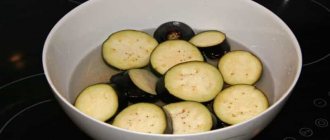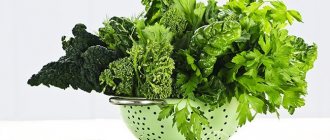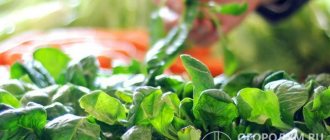After harvesting a rich harvest, housewives have a question: how to preserve eggplants for the winter? Despite the rather dense peel, the vegetable is very capricious in storage and requires the creation of suitable conditions. In an unfavorable microclimate, the product quickly deteriorates, loses its taste, vitamins and minerals.
Our article presents useful tips and little secrets that will help you preserve eggplants at home for a long time.
You can store eggplants fresh, frozen, dried or canned. The main thing is to choose good fruits and create favorable storage conditions
Harvesting and preparing vegetables for storage
If you want to keep eggplants fresh and tasty, take care of their correct and timely collection (before frost). Harvest in dry weather and try to immediately protect it from direct sunlight. Cut the fruits with a sharp knife or pruning shears, leaving 3-4 cm of the stem.
Late (ripening period - from 140 days or more) and mid-season (up to 130 days) eggplant varieties are best suited for storage : “Almaz”, “Gorodovoy”, “Romantic”, “Sofya”, “Tezka”, “Torpeda”, "Universal 6" and others.
For storage, choose mid- or late-ripening varieties of eggplant. Collect them during the ripening period, not allowing them to overripe
For storage, use vegetables whose shape, size and skin color correspond to the ripeness parameters characteristic of the variety.
It is important that the fruits are free from damage , signs of disease and pest damage. To do this, carefully examine each vegetable and discard those that raise doubts.
Eggplants must be ripe . There are no problems with overripe ones: they can be identified by the presence of lighter spots on the skin and a decrease in the elasticity of the pulp. The problem in this case is that eggplants, unlike tomatoes and peppers, cannot ripen indoors. When picked slightly unripe, they immediately begin to deteriorate, and, as a rule, it is impossible to distinguish ripe from unripe, since their skins have the same “ripe” color (for example, purple). Fortunately, you can still figure it out. Unripe eggplants weigh much less than fully ripe ones. Therefore, only “heavy” fruits are stored, and those that are too light are selected for immediate processing.
For storage, choose only ripened, firm eggplants with whole peel.
After sorting, dry the eggplants in a dark, well-ventilated area for 1 day. If the weather is good, you can place the vegetables outside, but in this case, be sure to cover them with burlap, protecting them from the sun.
Do not wash eggplants before storing them in the cellar or refrigerator. Moisture will speed up the rotting process and can lead to the loss of the entire crop.
Useful properties of blue ones
Among these are the following:
- has diuretic properties, helps against swelling;
- contains few calories;
- stimulates the gastrointestinal tract;
- promotes hematopoiesis due to the content of copper and magnesium;
- normalize the functioning of the cardiovascular system;
- prevents the development of cholelithiasis;
- due to its low calorie content, it is very useful for people who are overweight;
- ideal for the prevention of cancer.
For these reasons, I want to eat eggplants not only in summer and autumn, but also in winter, when there is a constant lack of vitamins in the body, since it spends more energy fighting the cold and various viruses, while the immune system wears out, I want to somehow support it . To do this, many thrifty people try to preserve fruits and vegetables for the winter using various methods. Today we will talk about how to keep blueberries fresh for the winter.
Shelf life of eggplants
It is important for every housewife to know how long eggplants and preparations made from them can be stored, this will allow the product to be consumed before the expiration date. For convenience, all information about shelf life is collected in the table:
| Storage method | Term |
| At room temperature | 2-4 days |
| In a refrigerator | 7-14 days |
| On the balcony or in a cool closet | 30 days |
| In the cellar or basement | 2-4 months |
| Dried | 3-6 months |
| In the freezer | 12 months |
| Dried | 12 months |
| Canned | 1.5-2 years |
When is it time to remove eggplants from a bush in a greenhouse?
The ripening of eggplants lasts from 80 to 150 days and depends on the variety - they are early, medium and late. Vegetables are collected selectively as they ripen, and not all at once.
The following factors influence maturation:
- sowing time;
- variety and quality of seeds;
- weather;
- features of care.
During the ripening period, eggplants are harvested once every 5-7 days. They should not be allowed to become overripe - they become unsuitable for food.
Ripening time
Early varieties of eggplants are pleased with their rapid ripening. Their main advantage is resistance to low temperatures and poor lighting.
Within the group of early varieties and hybrids there are subgroups and favorites.
Ripening in 60-70 days:
- Valentina F1;
- Bibo F1;
- Fabina F1.
In 70-80 days:
- Nadir;
- Black handsome;
- Diamond.
In 90-100 days:
- Robin Hood;
- Giselle F1.
The ripening period for mid-early eggplant varieties and hybrids also varies.
Ripening in 100-115 days:
- White Night;
- Bull heart F1;
- Alekseevsky.
In 120-140 days:
- Sancho Panza;
- Black Moon F1;
- Namesake.
Eggplants of late varieties delight gardeners in the midst of autumn.
Ripening in 120-135 days:
- City F1;
- Black handsome.
In 135-150 days:
- Sophia;
- Bull forehead;
- Mishutka.
On average, from 1 sq. m of greenhouse, 5-7 kg of eggplants are harvested. One bush produces up to eight fruits.
How to keep eggplants fresh in the basement or cellar
Eggplants are well preserved in a cellar or basement. In such rooms there is a suitable temperature (+3...5 ℃) and air humidity (75-85%).
There are several ways to store vegetables in the cellar:
- Wrap the eggplants in paper and place them on shelves previously lined with straw. Cover the top with burlap, and if the cellar freezes, with warm blankets.
- Place the vegetables in a box , sprinkling each row with ash or dry sand.
- Wrap 2-3 eggplants in plastic or paper bags , squeeze out as much air as possible from them and tie tightly. Place the products in wooden or plastic boxes and place them on the floor.
You can store eggplants in the cellar in straw. To preserve your harvest, go through your vegetables every 2 weeks and remove any spoiled, limp or crushed ones.
Where to store vegetables and fruits at home
In the refrigerator: artichokes, Brussels sprouts, grapes, cherries, blueberries, mushrooms, blackberries, green beans, zucchini, cabbage, strawberries, leeks, leafy vegetables, raspberries, beets, celery, plums, asparagus, herbs (except basil) , black currant, spinach.
In the refrigerator in a bag: broccoli, peas, green onions, corn, carrots, radishes, lettuce, cauliflower.
Store in the refrigerator separately from other vegetables and fruits (they emit ethylene): apricots, figs, apples (if stored for more than 7 days).
On the shelf/table: pineapple, oranges, watermelon, basil, eggplant, pomegranate, grapefruit, melon, ginger, potatoes, onions, mangoes, tangerines, lime, lemons, cucumbers, papaya, peppers, tomatoes, pumpkin, garlic, persimmons.
On the table separately from other vegetables and fruits: bananas, tomatoes, apples (if stored for less than 7 days).
Let ripen on the shelf and then in the refrigerator (separate from other fruits and vegetables): avocado, kiwi (does not emit ethylene, can be stored with other fruits), pears, nectarines, peaches, plums.
To keep greens (or any grass) fresh, cut off the ends and place the plants in water (like flowers in a vase).
Let's clarify some points.
Why store separately?
As soon as fruits and vegetables are harvested, they begin to emit an unpleasant and harmful gas - ethylene. All fruits produce it, but there are those that produce it in large quantities.
If ethylene-producing plants are kept together with vegetables or fruits sensitive to this gas in a closed container or bag, then the process of ripening of the products begins to accelerate significantly, and therefore they begin to spoil faster. True, this phenomenon can be used for good purposes. For example, if you put an apple with unripe bananas or avocados, they will ripen faster.
How to store vegetables and fruits without a refrigerator
To keep food fresh for as long as possible, it is necessary to avoid direct sunlight on its surface.
You should not leave vegetables and fruits in sealed plastic bags, this leads to slower ripening and even rotting due to the lack of oxygen and the accumulation of carbon dioxide inside the bag. Always give preference to environmentally friendly packaging and storage containers - wooden boxes, paper bags, etc.
If you want to speed up the ripening of any vegetable or fruit, then add an apple to it in the bag (1 fruit for every 5 - 7 pieces of product). Due to the ethylene released by apples, the ripening process will accelerate.
Most likely, many are surprised that, for example, watermelon or bananas cannot be stored in the refrigerator. The fact is that bananas' skin turns black at low temperatures. Watermelons lose their aroma and color when stored for more than 3 days in the refrigerator. Pink tomatoes ripen faster at room temperature.
Storing vegetables and fruits in the refrigerator
You should not wash plant products before putting them in the refrigerator, as mold may appear on their surface. If you have already done this, dry them thoroughly.
How to store eggplants at home
You can preserve eggplants for several weeks at home. To do this, it is important to create a favorable microclimate in compliance with the following recommendations:
- Storage temperature – +3…5 ℃.
- Air humidity – 75-85%.
- Complete absence of sunlight or artificial light.
At temperatures above +6 ℃, the fruits become covered with gray rot. If the thermometer readings exceed +20 ℃, vegetables change their color and lose their taste.
You can store eggplants at home in the refrigerator , where optimal and stable temperature and air humidity are maintained. Wrap each vegetable in cling film or paper and place in the vegetable compartment.
When storing eggplants in the refrigerator, limit their contact with other vegetables or fruits. This will protect the products from rapid spoilage and rotting.
You can store vegetables on an insulated balcony or loggia. To do this, wrap each fruit in cling film, carefully place it in a wooden box and take care to protect the product from light.
Sunlight has a negative effect on eggplants. Under the influence of ultraviolet radiation, solanine is produced in them, which makes the fruits bitter, tasteless and hazardous to health.
Vegetables do not keep well at room temperature. They quickly lose moisture and freshness, dry out and wither. The maximum shelf life in this case is 2-4 days.
Conditions for preserving vegetables
There are general parameters under which eggplants retain all their beneficial properties, appearance and other quality indicators when fresh. They are as follows:
- air humidity – minimum 75%, maximum 85%;
- air temperature for long-term storage is from -10 to +6°С, for short-term storage – no higher than +20°С.
If the thermometer readings exceed the specified limits, gray rot will form on the vegetables over time. A prerequisite is the absence of light, both solar and artificial.
Storing vegetables in the freezer
Another type of eggplant storage is freezing at a temperature of −12 ℃. This is the best option for those who live in a city apartment and do not have access to a cellar. Frozen vegetables retain their beneficial properties and also significantly save time when preparing food.
The taste of fresh eggplants deteriorates greatly when frozen. (Even if you take white or green varieties that are not bitter). The method of freezing fried or baked “semi-finished product” seems much more correct if you don’t want or can’t make canned eggplants.
The classic way to freeze eggplants:
- Wash the vegetables well under running water.
- Cut the eggplants into cubes, circles or slices.
- Place the vegetables in a deep bowl and add salt. After 30-40 minutes, drain the juice, which will remove all the bitterness of the eggplants.
- Blanch the vegetables for 5 minutes and then drain them in a colander to drain excess liquid.
- Place the prepared fruits on a cutting board and place in the freezer. It is better to choose a separate box for this, since eggplants quickly absorb foreign odors.
- After a few hours, take out the workpiece and put the products into bags. This method of freezing will prevent the vegetables from sticking together.
To save space and ease of use, cut the eggplants into circles, cubes or slices before freezing.
You can also freeze baked eggplants . Wash the vegetables well, cut into slices and bake in the oven. You can use spices or herbs to add flavor. Cover the cooled eggplants with cling film and place in the freezer.
Eggplants cannot be re-frozen, so remove only enough vegetables from the freezer to use at one time.
a preparation of fried eggplants will help you save time when cooking . First of all, wash the vegetables, dry them and cut them into slices or cubes. Boil the eggplants for 5 minutes in salted water and then fry in oil. Place the products in bags and put them in the freezer.
Properly frozen eggplants retain nutrients and taste.
Frozen fried eggplant
It’s even easier to prepare a dish of frozen fried eggplants in winter. They turn out very tasty!
- Wash the little blue ones, dry them, cut them in any way - as you like.
- Sprinkle with salt and leave in a bowl for an hour. Then drain the liquid and rinse. Dry again in a paper towel.
- Pour vegetable oil into the frying pan, fry the blue ones in portions - 5 minutes on each side. Remove with a slotted spoon and place on a folded paper towel. Gently blot off excess fat.
- Place the cooled blue ones on a board or tray with film in one layer. If necessary, cover them again with film and lay out the next layer. Freeze it.
Take it out and remove the cling film. Place in portions into sealed bags and close. After defrosting, the blue ones can be lightly fried again.
Watch this video on how to properly freeze blue ones.
Other ways to store eggplants
It will not be possible to keep eggplants fresh for a long time, so many housewives make preparations using canning , drying and drying .
Drying
Dried vegetables retain their taste and nutrients and can be used to prepare salads, borscht and other dishes. Before drying, wash the fruits thoroughly and cut them into slices, cubes or strips.
To dry eggplants in an electric dryer , spread the vegetables in a thin layer on a wire rack and set the temperature to 60 degrees. The drying time depends on the model of the device and the thickness of the product cut.
Dried eggplants change their structure, but retain their taste, vitamins and minerals. In addition, they have a long shelf life
You can also dry the eggplants in the oven . To do this, place the product on the grill and set the temperature to +200 ℃, and after 60 minutes, reduce to +100 ℃ and leave for another 4 hours. When drying in the oven, keep the door open to allow constant air circulation. Dried eggplants should be stored in a glass container in a dark place/room/on a dark shelf in a kitchen drawer.
Drying
You can dry eggplants in an electric dryer or oven . The process is similar to drying, but the result should be a product with a hard crust and a soft center. Place the dried eggplants in a glass container, add seasonings and pour hot vegetable oil. After cooling, store the workpiece in the refrigerator .
Canning
You can find step-by-step recipes for pickling eggplants on our website in this article.
Housewives use a variety of recipes for preservation: vegetables in tomato juice, vegetable salads, eggplant with dill or garlic, etc. Eggplant caviar is especially popular. You can learn a detailed recipe for preparing the preparation from the video:
It will not be possible to preserve fresh eggplants until spring, but proper storage organization will extend the shelf life by a couple of months. Vegetables can also be frozen, dried or canned.
Adviсe
If you know the secrets and subtleties of storing, collecting and preparing eggplants and know how to apply them in practice, you can greatly simplify your life.
If you want to preserve the integrity of eggplants in an apartment environment, you can use paper bags. Just put each one in a separate bag and put it in a cool place. Due to excellent breathability, the fruits will be stored for a long time. Nowadays there are various refrigerators. If you have the No frost function, then eggplants can be stored for up to 2 months
You should pay attention to the color of the eggplants; if, after cutting them, they immediately turn brown, then you should not freeze them, as they will be bitter later. You shouldn’t stop at just one option for storing blueberries; to know all the tastes and nuances, you should try making a little of each type
If you want the fruits to freeze in a short period of time, then you should cut them into small cubes and lay them out in one layer.
If all conditions are met, you can preserve all the beneficial elements that eggplant contains, as well as diversify your diet with nutritional qualities. With proper processing, you can enjoy the taste of your favorite vegetables until spring.
Alternative methods of preparing for the winter
To preserve the taste of eggplants longer, it is recommended to can them or dry these vegetables.
Drying
You can prepare dried vegetables at home using an oven, an electric dryer or in the fresh air. In order to dry eggplants, they need to be washed, dried and cut into slices or circles. This product should be stored in a container, paper bag or cloth bag.
Drying in the fresh air
After cutting, the vegetables can be placed on a baking sheet or hung strung on a thread or fishing line. After this, it is recommended to leave them in a dry, ventilated place without direct sunlight. This method is dependent on weather conditions and requires the same humidity and temperature throughout the drying period.
Drying in an oven or electric dryer
If the weather is not favorable and you have an oven or electric dryer, then eggplants can be cooked in them. To do this, cut fruits must be kept in the oven at a temperature of 45-55 ° C for 4-6 hours. After cooling, it is recommended to inspect them. If the fruits are not dry, then they need to be dried. When cooking in an electric dryer, you need to set the appropriate mode and dry for 6-8 hours.
See also
How long can different types of soups be stored in the refrigerator, terms and rules
Drying
Dried vegetables can be made in the oven or electric dryer. Once cooked, they should have a firm crust and a soft center. To do this, they need to be dried in the oven at a temperature of 60 ° C for 2-4 hours or in a dryer in the appropriate mode until ready. After this, they need to be placed in a container and filled with hot oil and spices. The cooled product should be stored in the refrigerator.
Canning
Canning is the most common way to store eggplants at home. They can be salted, fermented, pickled, or made into eggplant caviar. These vegetables can also be preserved in tomato juice or oil.
Salty
To prepare salted eggplants, you need to place the chopped fruits in a saucepan or other container, add chopped dill and garlic to them, add salt (2-3% of the weight of the vegetables in salt equivalent) and mix. After this, leave under pressure for 2-4 days at a temperature of 18-24 ° C until the brine becomes cloudy.
Pickled
The composition of the roll with pickled eggplants includes:
- fresh fruits – 2.5-3 kilograms;
- 3-4 cloves of garlic;
- salt - 4 tablespoons for cooking, 10-15 grams for garlic and 30-40 grams for preparing brine;
- 1-2 bay leaves;
- 0.5 liters of water for brine.
To cook vegetables you need:
- Trim the tails of the fruits and prick them with a toothpick over the entire area.
- Boil them for 10-20 minutes in salted water (2 tablespoons per 1 liter) until wrinkles appear on the peel.
- Press the vegetables at an angle for 7-12 hours.
- Grind the peeled garlic with salt.
- Cut the fruit into 2 equal parts lengthwise and spread the garlic mixture over the entire surface.
- Place bay leaves (peppercorns and/or cloves to taste) and eggplants on the bottom of the container.
- Prepare brine in a ratio of 60 grams of salt per 1 liter of water. You should let it cool and then pour it into a container with vegetables.
- Cover the container with the ingredients and leave to ferment for 5-7 days at a temperature of 19-24 °C.
- At the end of fermentation, remove the container to a cool place for further storage.
Snack with vegetables
These vegetables can be prepared with various vegetables such as carrots, tomatoes or bell peppers. The pepper recipe includes:
- eggplants – 1.5 kilograms;
- bell pepper – 500 grams and chili – 50 grams;
- garlic – 70-80 grams;
- vegetable oil – 90-120 grams;
- vinegar - 10-12 tablespoons;
- honey – 110-120 grams (can be replaced with sugar);
- salt – 2 tablespoons.
See also
What is the best way to store fresh zucchini at home in an apartment or cellar?
In order to prepare these vegetables with hot and bell peppers, you need:
- Wash, dry and cut the fruit into slices up to 1 centimeter thick.
- Place parchment paper on a baking sheet and chopped eggplant on top. Leaves and vegetables should be thoroughly greased with vegetable oil.
- Prepare a dressing from the seeds and tails of peppers and garlic. To do this, you need to cut them into pieces and grind them using a blender or meat grinder.
- Add vinegar, honey (or sugar), salt to the resulting mass and mix thoroughly.
- Place vegetables and dressing in jars, alternating layers (for 1 layer of eggplant you need 2 tablespoons of the mixture on top and bottom).
- Place the jars in water and boil for 15 minutes.
- Roll up the containers with lids, turn them over and let cool.
When to Harvest Eggplants
To properly store eggplants for the winter, it is necessary to harvest them on time. The timing depends on the characteristics of the variety, climatic conditions and care. Since vegetables are intended for storage, you should not wait until they are fully ripe - harvesting is carried out at the stage of technical ripeness. You should focus on several parameters:
- ripening dates indicated in the description of a particular variety;
- fruits with elastic pulp;
- seeds are underdeveloped, poorly expressed;
- glossy shine of the peel.
Early ripening eggplants are harvested 90-110 days after sowing the seeds for seedlings. Mid-early varieties are harvested after 120-130 days, and late varieties - after 130-140 days.
Common Mistakes
When preparing eggplants for the winter, you can make mistakes that will lead to damage to the product or its taste. If you do not sterilize the jar before sealing, then even after boiling the contents, there is a chance that it will become moldy or begin to deteriorate. With sudden changes in air temperature or humidity, the shelf life of prepared fresh vegetables is greatly reduced. Exposure of fruits to direct sunlight accelerates the process of spoilage. They can also release substances harmful to the body.
Storing eggplants in the freezer with other products is not recommended, as vegetables quickly absorb foreign odors.
Loosening and hilling
After watering, a crust forms on the surface of the soil, which prevents air from penetrating to the roots. Lack of oxygen leads to stunted growth of roots and, as a consequence, the entire plant. For this reason, one of the mandatory procedures when growing eggplants is regular (ideally after each watering) loosening.
You need to loosen the soil to a depth of no more than 4-5 cm so as not to touch the roots
This is important because The root system of eggplants is not restored and additional roots, as, for example, on the stems of tomatoes, do not appear
Simultaneously with loosening, hilling should also be carried out - adding soil to the trunk of the plant.
Basic Rules
There are different ways to preserve this perishable product so that you can enjoy its taste for a long time.
How to store eggplants: they are stored raw, frozen, dried and canned.
When storing raw, there are strict rules that must be followed:
- take unripe fruits of the latest variety;
- Eggplants that are not damaged must be stored;
- storage occurs in complete isolation from ultraviolet rays;
- Do not wash eggplants before storing and do not cut off the stem;
- It is necessary to carry out a constant inspection of vegetables, once every 10–12 days, and remove spoiled eggplant immediately.
The holding time of the vegetable in proper condition also depends on the temperature.
Eggplants can be stored in the refrigerator, basement or cellar.
The cellar, or basement, is the ideal place to find fresh vegetables. It should be ventilated, humidity 70–80%, temperature +3 to +6°C. Vegetables should be wiped with a cloth towel. It is best to place them in boxes with straw or dry sawdust with the cuttings facing down. If there are none, each eggplant is wrapped in newspaper or paper and placed in ventilated boxes, with burlap covered on top.
The refrigerator is not as effective in preserving this product, but it will be a good alternative if you do not have a cellar. Ideally, the refrigerator is equipped with a circulating cold air system. The temperature should not exceed +8°C. Each fruit is wrapped in a paper towel and placed individually in a plastic bag.
The best option is to have a glazed balcony, where the air temperature does not drop below +3°C. Laying method: in breathable boxes, stems down, covered with straw or burlap on top.
Eggplant should be stored unwashed and with the stem intact.











